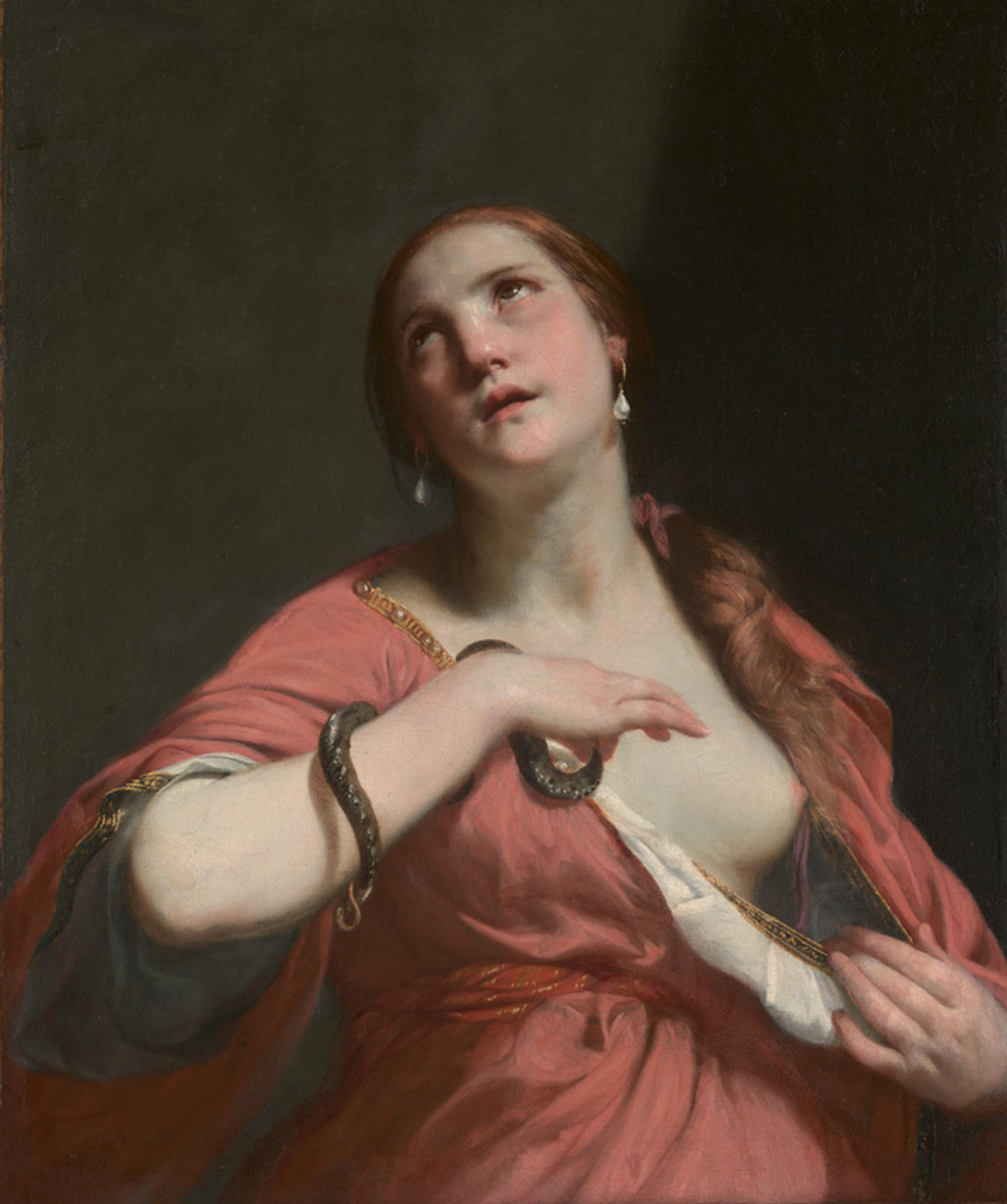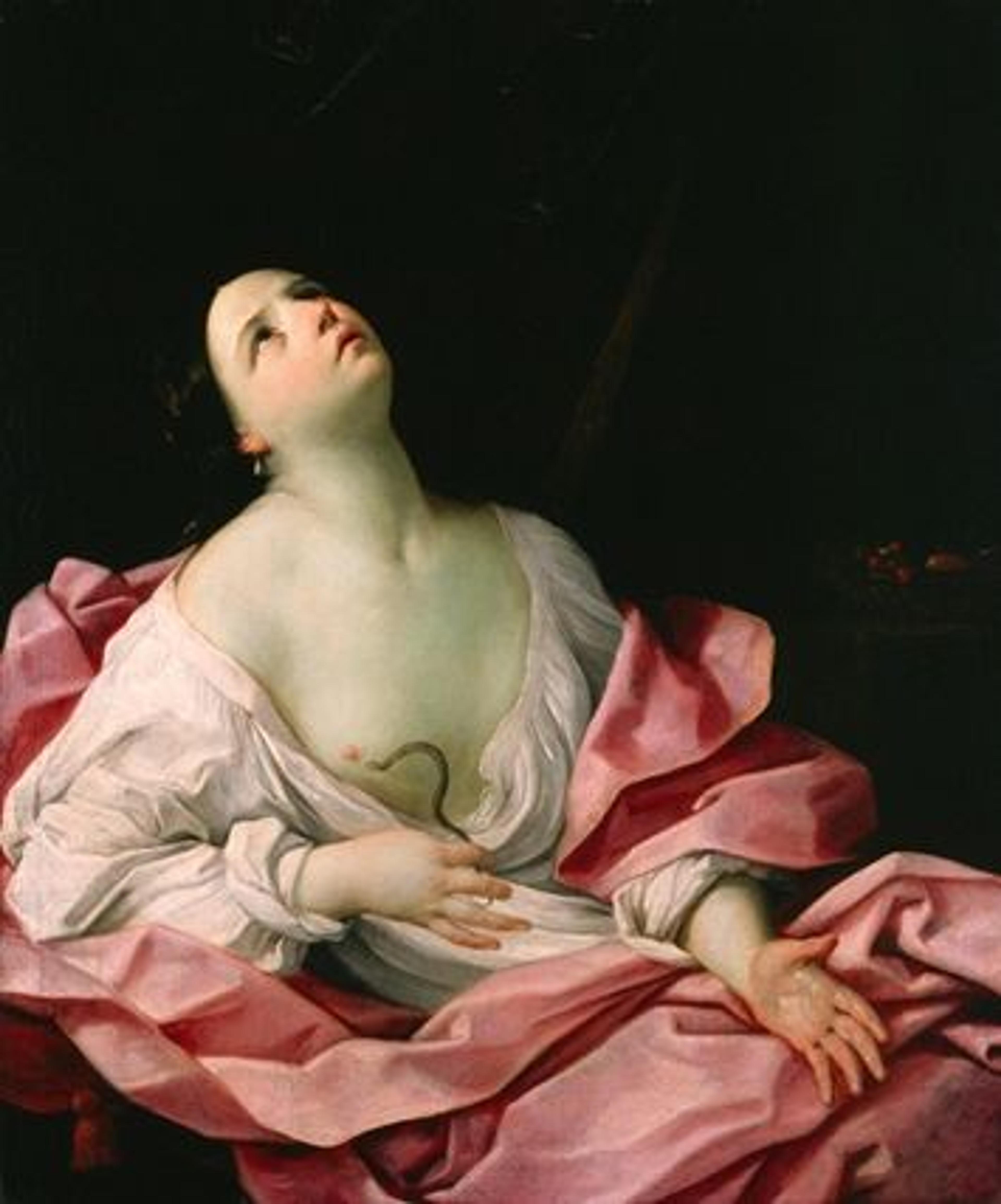
Guido Cagnacci (Italian, 1601–1663). The Death of Cleopatra, ca. 1645–55. Oil on canvas, 37 3/8 x 29 1/2 in. (95 x 75 cm). The Metropolitan Museum of Art, New York, Purchase, Diane Burke Gift, Gift of J. Pierpont Morgan, by exchange, Friends of European Paintings Gifts, Gwynne Andrews Fund, Lila Acheson Wallace, Charles and Jessie Price, and Álvaro Saieh Bendeck Gifts, Gift and Bequest of George Blumenthal and Fletcher Fund, by exchange, and Michel David-Weill Gift, 2016 (2016.63)
«Cleopatra is surely the most celebrated femme fatale in history. Even Hollywood could not resist her: there was Claudette Colbert playing the role in 1934 for Cecile B. DeMille, and, of course, there was the sensationally beautiful Elizabeth Taylor playing opposite Richard Burton in 1963. (The over-the-top movie was a financial disaster.)»
Long before Hollywood, however, Cleopatra had already become a cultural icon—an emblem of sexual allure redeemed (to a degree) by her faithfulness to her final lover, Mark Antony, to whom she wished to be reunited through death. In Shakespeare's Anthony and Cleopatra, she utters the wonderfully paradoxical lines:
The stroke of death is as a lover's pinch,
Which hurts, and is desired
It was the desire to be reunited with her beloved through death that fascinated poets and painters in Baroque Italy. A contemporary poet of Guido Reni (1575–1642) wrote about one of the artist's paintings on the theme of Cleopatra's suicide:
Ingenious brush
That giving life to Egypt's Queen has made
Her so alive that some before her bow:
Fair monarch, not by asp but love betrayed.
Love kills her.
The way to give her life the painter knows:
The brush breathes vital spirits in her,
The serpent then upon her death bestows.

Left: Guido Reni (1575–1642). Cleopatra with the Asp, ca. 1628. Oil on canvas, 114.2 x 95.0 cm. Royal Collection Trust / © Her Majesty Queen Elizabeth II 2017
The poem was written in praise of a work by Guido Reni, but it could just as easily—and perhaps with greater justice—have described a compelling picture painted by one of Reni's younger contemporaries, Guido Cagnacci, The Death of Cleopatra, which is on view through March 26 in European Paintings: Recent Acquisitions 2015–16.
I say this because Cagnacci did not disguise the individual features of his model, who was probably his mistress; rather, he literally exposes the erotic fascination of her death in a poetics of contradiction. This is an acquisition that throws a completely unexpected light on the period we think of as the Baroque.
Related Links
European Paintings: Recent Acquisitions 2015–16, on view at The Met Fifth Avenue through March 26, 2017
Now at The Met: View all blog articles related to this exhibition.
